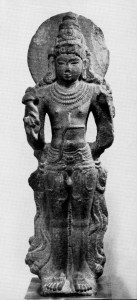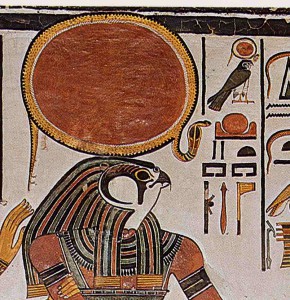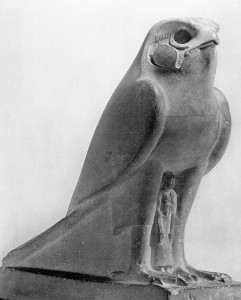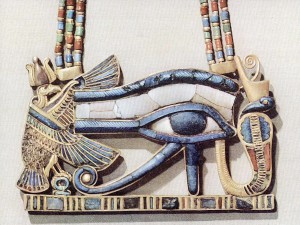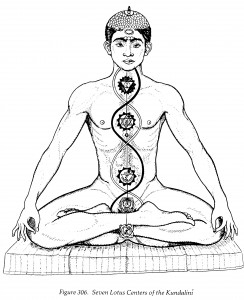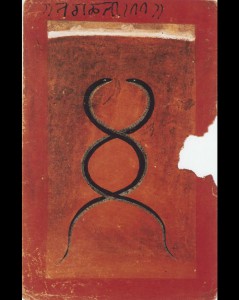Surya the Sun God, is the celestial luminary embodied in human form as a Hindu deity. In his two upraised hands he holds the lotus, primary symbol of the sun’s creative force.
In Vedic astrology Surya is considered a mild malefic on account of his hot, dry nature. Surya represents soul, will-power, fame, the eyes, general vitality, courage, kingship, father, highly placed persons and authority.
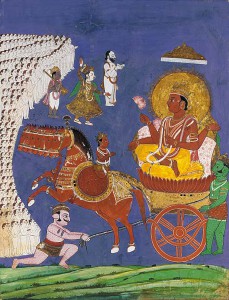 Surya is the chief of the Navagraha, Indian “Classical planets” and important elements of Hindu astrology. He is often depicted riding a chariot harnessed by seven horses or one horse with seven heads, which represent the seven colours of the rainbow or the seven chakras.
Surya is the chief of the Navagraha, Indian “Classical planets” and important elements of Hindu astrology. He is often depicted riding a chariot harnessed by seven horses or one horse with seven heads, which represent the seven colours of the rainbow or the seven chakras.
Surya as the Sun is worshiped at dawn by most Hindus and has many temples dedicated to him across India.
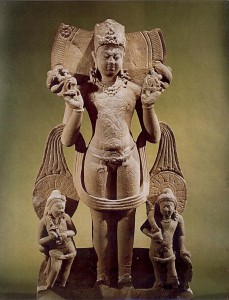 Sometimes, Surya is depicted with two hands holding a lotus in both; sometimes he has four hands holding a lotus, chakra, a conch, and a mace.
Sometimes, Surya is depicted with two hands holding a lotus in both; sometimes he has four hands holding a lotus, chakra, a conch, and a mace.
Interestingly, Surya’s two sons Shani and Yama are responsible for the judgment of human life. Shani gives us the results of one’s deeds through one’s life through appropriate punishments and rewards while Yama grants the results of one’s deeds after death.
Pingala, who attends him to his right, (see left image) holds a tablet and writing implement in order to record men’s deeds; to the god’s left is his bodyguard Dandi, armed with a sword and shield. Guiding a horse-drawn chariot (usually with seven, but sometimes with one, three, or four horses) across the sky, Surya overcomes darkness.

